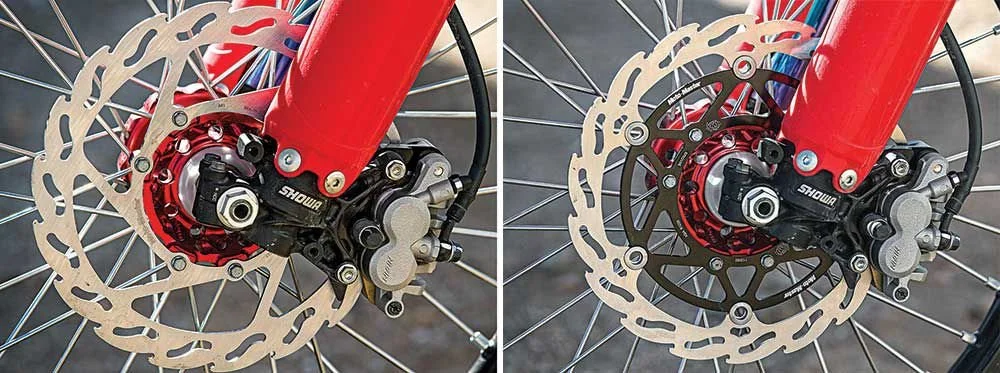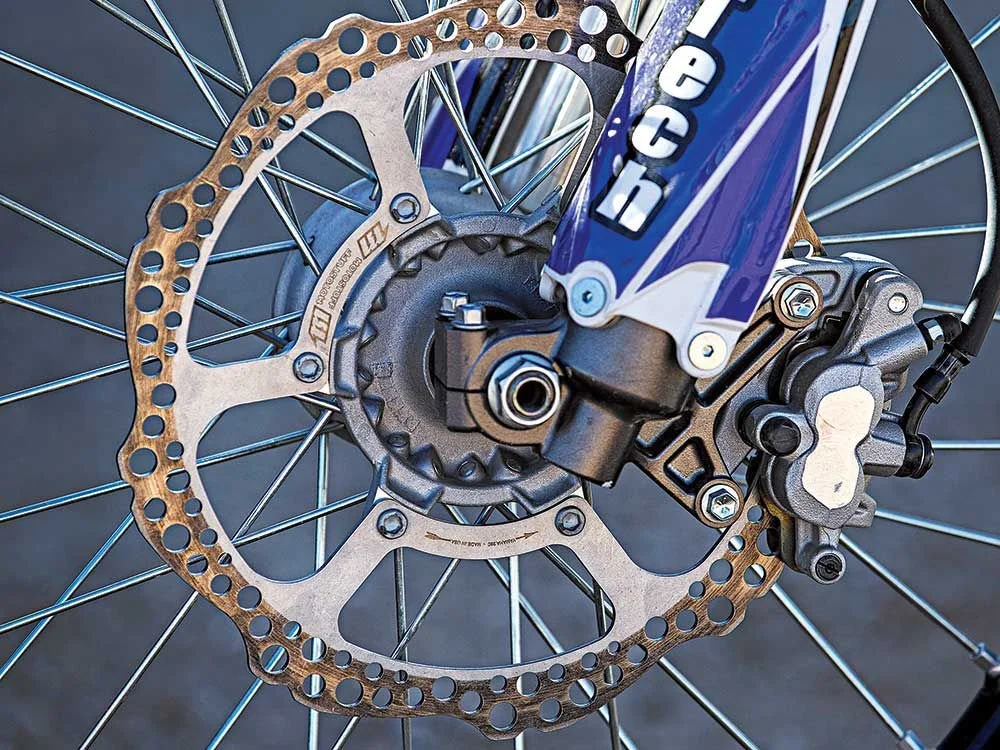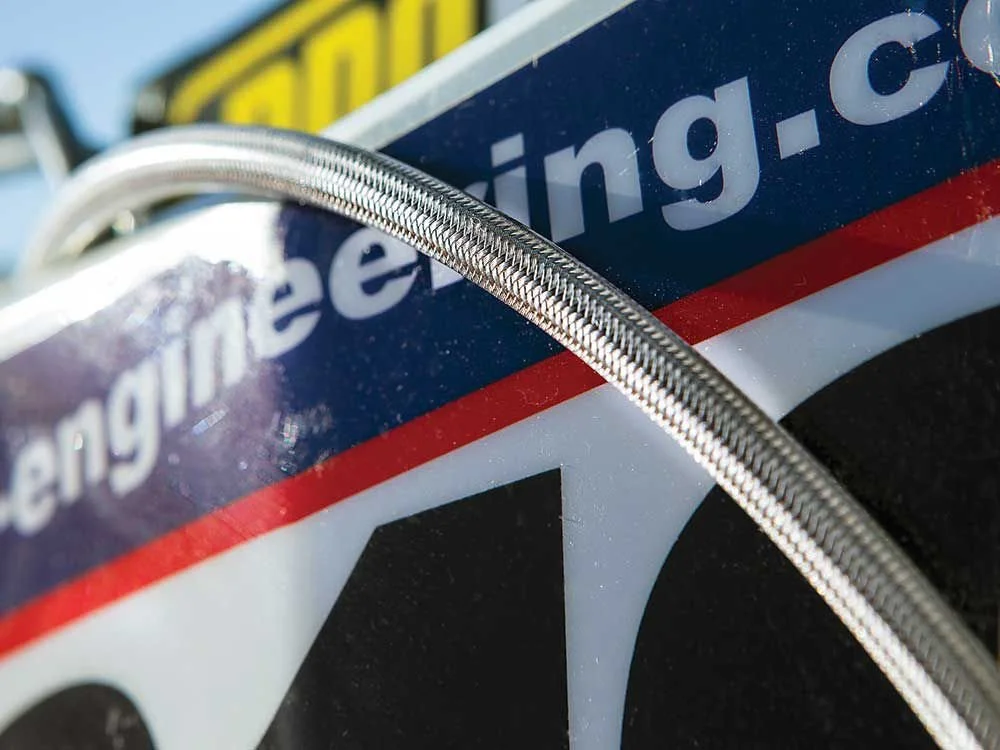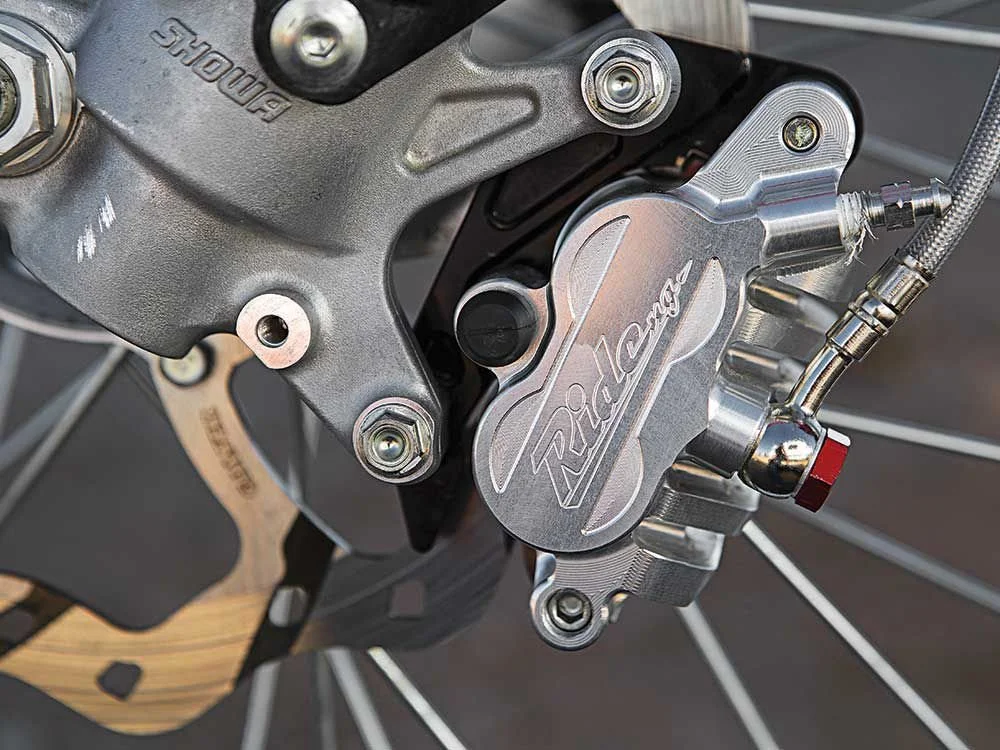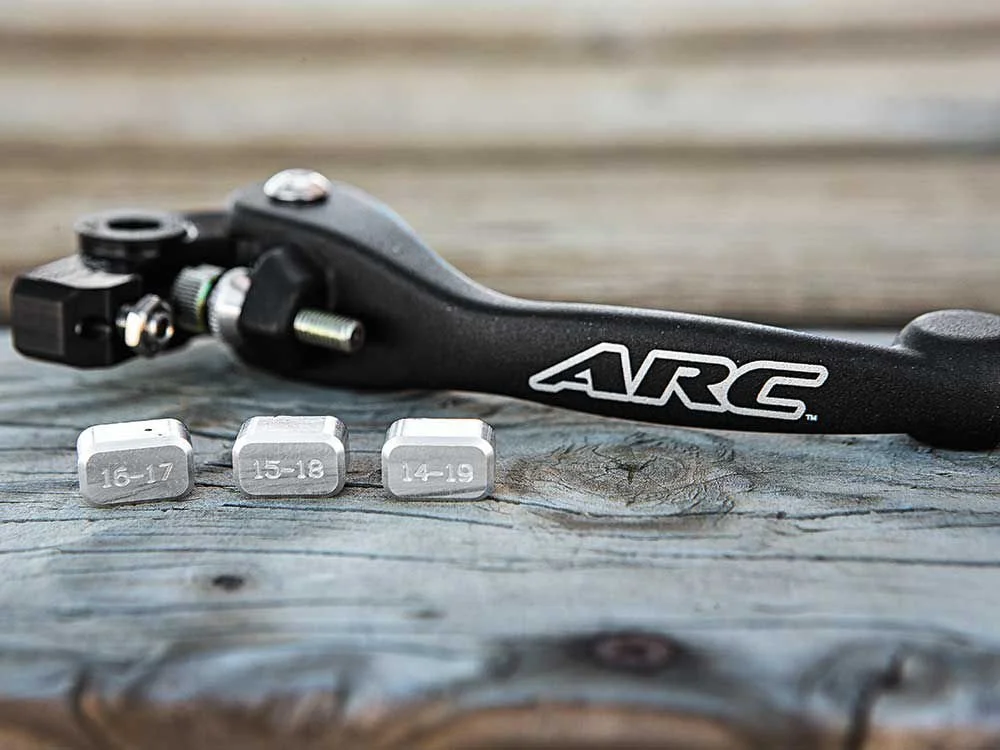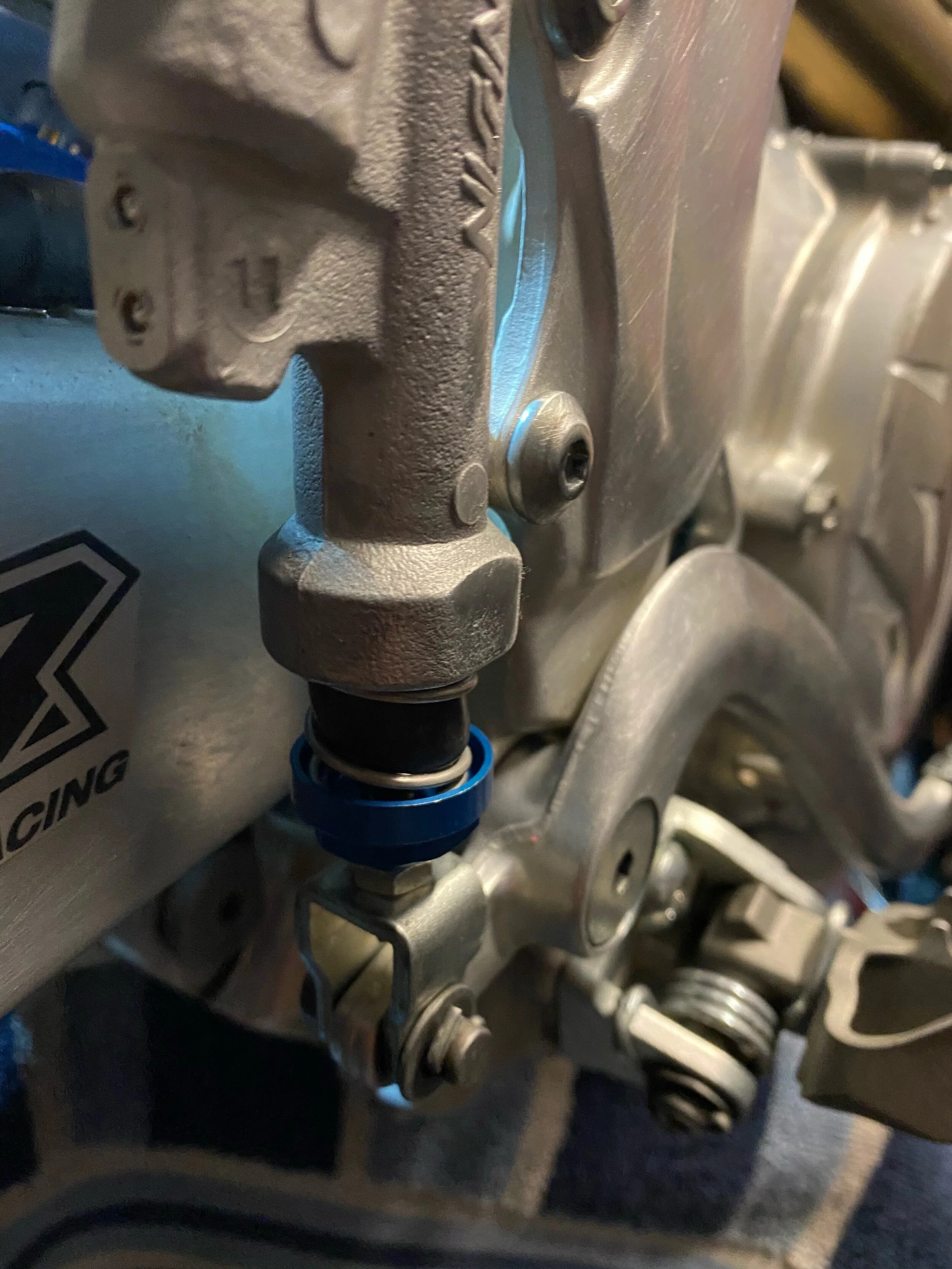You can only go as fast as your brakes allow you to slow down. That doesn’t sound quite right, does it? But if you don’t have good stopping power on your dirt bike, chances are you will not be able to get around the track or clip down that trail at any reasonable rate of speed without missing your mark or crashing. Most of today’s off-road motorcycles come stock with fairly good brakes and are usually plenty capable for 90 percent of the riders out there. But what about those 10-percenters who want just that little extra or maybe are super picky about how their brake engages or feels? We wanted to “brake” down several ways that you can alter your brakes’ performance to get the most out of that lever and pedal.
Who comes with the best stock brakes, out of all the new off-road machines? KTM has used Brembo brakes, Galfer rotors, and steel-braided brake lines for quite some time. This combination has proven to be the most powerful, yet the most progressive, way to get stopped or slowed down from an off-the-showroom dirt bike. If you’re on a Nissin brake system, using some of these modifications below will get your bike to this point, or using all of these mods will get you past it.
Fixed Or Floating?
A fixed brake rotor is a simple, solid, one-piece rotor. A fixed brake can also increase lever pressure and power but is susceptible to more warpage when hot due to its solid mounting points. Fixed rotors are lighter than a floating rotor, and, remember, rotors are unsprung weight, which is key to a bike’s handling on motocross machines. A floating rotor system uses bushings that attach a mounting bracket to the brake area where the pads grab. The bushings offer a slight bit of play, allowing for a more centered or equal grab by pads, leading to more even pad wear. Also, in case of an impact, floating discs can take more abuse than a fixed disc. However, floating discs are heavier and more expensive.
On The Track: A fixed rotor has a more positive feel at the front brake lever and can be grabby at times. A floating rotor is not as positive and can require a little more lever pressure to help stop the machine, but is also more linear feeling.
Oversize Rotors:
This is the most common of all brake purchases. An oversize rotor can dissipate heat more (due to its larger circumference), increase brake pad life, and increase the stopping power to your front brake lever because of its extra leverage. Most stock competition off-road bikes come with a 260mm or 270mm front rotor and a 240mm, 245 and 250mm rear rotor. Aftermarket brake companies usually offer their “oversize” front rotors in either 270mm or 280mm. When going to a larger rotor than stock you will need to also change the caliper carrier, which usually comes with the rotor.
On The Track: A noticeable improvement in braking power. Note that when going to a larger rotor than stock, the brake can become more responsive (or grabby) to the touch of the lever.
Steel Braided Brake Lines:
Steel-braided lines reduce expansion when the brake fluid gets hot. This keeps the lever engagement consistent and in the same spot over a longer period of time. The life span of a steel-braided line is longer than a standard rubber/nylon line that comes on most machines. You get more consistent feel at the lever, and consistency is key for any rider.
On The Track: Just purchasing a steel-braided brake line alone with your stock brakes can increase stopping power, especially in longer races. With a steel-braided line and oversize rotor the braking power becomes more intimidating to less skilled riders, but faster riders usually love how easy it is to get the bike slowed coming into corners.
Brake Calipers:
Another option for Nissin brake riders is installing an aftermarket brake caliper. A couple companies offer different calipers (Ride Engineering and MotoStuff) that can dramatically increase your stopping power. An aftermarket caliper has pistons that are larger than a stock Nissin caliper, and with this comes increased power at the lever. But unlike just going to an oversize rotor, a caliper can give you a more progressive feel. Going to larger pistons changes the leverage ratio when using the stock 11mm master cylinder that most Nissin-equipped bikes come with (Honda, Kawasaki, Suzuki), so it feels more gradual and less grabby. Flex is also reduced and airflow is increased with wider fins.
On The Track: The front brake lever has a slightly softer feel to it with the Ride Engineering caliper, but braking power is increased and is more progressive. Going to an aftermarket caliper gives you a better feel at the lever for increased tire traction when pulling in the front brake or dragging through ruts/corners over a longer throw. Along with a steel-braided line and oversize rotor it becomes easier to consistently ride faster and get into corners. It is also more lever friendly to all types of skill levels.
Brake Levers:
If you’re a picky rider and want to take it even further for that personal touch, there is the ARC adjustable front brake lever. The ARC lever lets you choose from three degrees of lever ratio that will let you dial in where you want the lever to grab. Some riders like a very touchy lever right at the beginning of its pull, and some riders like the lever to grab closer in to the handlebar. With the ARC adjustable front brake lever you are able to dial in your personal setting.
On The Track: This is for the pickiest of riders. If you love to tinker and really dial in your lever engagement placement, this is a great lever. It comes in aluminum and Memlon materials
Brake Fluid:
People often ask if they should use DOT 4 or 5 brake fluid. There is nothing wrong with sticking to DOT 4 brake fluid. Its boiling point is plenty high for any modification that you have read about here. However, do not mix DOT 4 and 5 together. DOT 4 is a glycol-based oil and DOT 5 is silicone based. If mixed, your brake will start to feel mushy and less powerful. DOT 5.1 is glycol based and can be added to DOT 4 if necessary, but it is also wise to flush your brake fluid out completely before adding anything different.
On The Track: No performance difference was felt on the track with DOT 4 or 5 brake fluid, but the lever can feel less spongey when going to fresh fluid.
Brake Pads:
Many companies offer the option of brake pads made with different types of material to alter the response and power of the pads’ feel.
On The Track: After some time riding on rotor-kit-specific brake pads and using stock OEM pads, I say stock pads usually wear more consistently (longer) and have a less grabby feel than most aftermarket pads. Some sintered pads were as powerful as OEM, but nothing proved to be any better than a standard OEM brake pads. We experienced more noise (squeak) on some rotor-kit-specific pads when dragging the brakes, more so than OEM pads. Riders who are known to be brake draggers preferred sintered pads, as heat buildup wasn't quite as bad as OEM pads that were not sintered.
What Do I Think?
All of these mods above will help your stopping power, but it is how you want that stopping power delivered that should guide you on which of these mods you make to your machine. If you feel like you have enough braking power, then by no means do you “need” any of this stuff, but if you would like to stop quicker and maybe be able to dive into a corner harder, one of these mods could be advantage. I normally will not do all of these mods together, as I normally would stick to one or two of these per machine at most.


